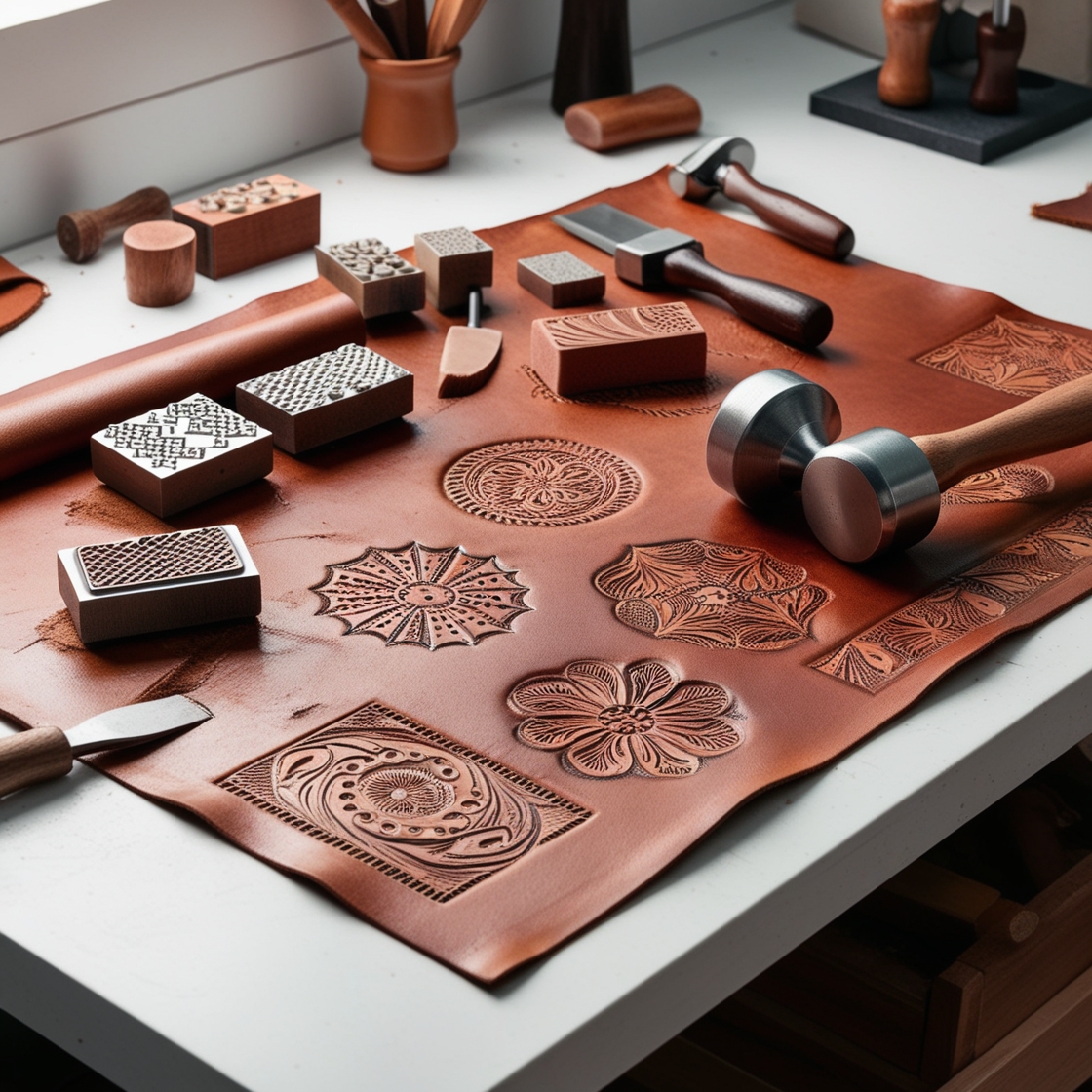Leather crafting is an art form that combines skill and creativity. Among the many techniques used, stamping and tooling are essential for adding unique patterns and textures to leather. These methods not only enhance the visual appeal but also give your leather projects a professional touch. In this guide, we will explore stamping and tooling techniques to help you achieve beautiful and intricate designs on leather.
Why Stamping and Tooling Matter
Stamping and tooling are pivotal techniques in leather crafting for several reasons:
Adds Unique Patterns
Stamping allows you to imprint various designs onto leather. By using different stamps, you can create unique patterns that make each piece special. This technique is perfect for adding a personal touch or branding your leather goods.
Enhances Texture and Depth
Tooling involves carving and shaping the leather to add depth and dimension. This technique transforms a flat surface into a beautifully detailed artwork. Tooling can turn a simple piece of leather into a stunning visual masterpiece.
Elevates Overall Quality
Well-executed stamping and tooling enhance the overall quality of your leather projects. They provide a polished, professional finish that can make a significant difference in the final product.
Essential Tools for Stamping and Tooling
To achieve the best results, having the right tools is crucial. Here are some key tools and materials you’ll need:
1. Stamps
- Creating Impressions
Stamps are used to imprint designs onto leather. They come in various shapes and sizes, allowing for a wide range of patterns.Benefits: Provides consistent, clear impressions.Usage Tip: Ensure the leather is damp before stamping to achieve clean, crisp designs.
2. Carving Tools
- Shaping the Leather
Carving tools are used for detailed work, adding texture and depth to your designs. These tools help you shape and refine the leather for a more intricate finish.Benefits: Allows for precise and detailed work.Usage Tip: Use sharp, high-quality carving tools to achieve the best results.
3. Mallets
- Applying Pressure
A mallet is used to strike the stamps and carving tools. The right mallet ensures even pressure, which is essential for clear impressions and smooth carving.Benefits: Provides controlled force for better impressions.Usage Tip: Choose a mallet with a comfortable grip and appropriate weight.
Glue Leather: Securing Your Craft
In addition to stamping and tooling, using glue is an essential part of leather crafting, especially when assembling multiple pieces.
Purpose:
Glue helps in securely bonding leather pieces together, ensuring a strong and durable final product.
Usage Tip: Choose a high-quality leather adhesive that provides a strong bond without damaging the leather. Apply a thin, even layer to both surfaces, press them together firmly, and allow adequate drying time for the best results.
Step-by-Step Guide to Stamping and Tooling Leather
Follow these steps to achieve stunning results with stamping and tooling:
- Prepare the Leather
Before you start, ensure the leather is properly cased and damp. This will make it more pliable and easier to work with. Tip: Use a sponge to apply water evenly and let the leather sit for a few minutes. - Plan Your Design
Decide on the design or pattern you want to create. Sketch it out or use a template to ensure accuracy. Tip: Practice on a scrap piece of leather before working on your final project. - Apply Stamps
Place the stamp on the damp leather and tap it gently with a mallet. Ensure the stamp is aligned properly to get a clear impression. Tip: Use consistent pressure to avoid uneven patterns. - Tooling the Leather
Use carving tools to add depth and detail to your design. Work slowly and carefully to achieve the desired effect.Tip: Start with lighter pressure and gradually increase as needed. - Let the Leather Dry
Once you’ve completed your stamping and tooling, let the leather dry thoroughly. This helps set the designs and ensures durability. Tip: Avoid handling the leather too much during the drying process to prevent smudging.
Conclusion
Stamping and tooling are essential techniques that bring life to leather crafting. By mastering these methods, you can create intricate patterns and add beautiful textures to your leather projects. Remember to use the right tools, prepare your leather properly, and use adhesive carefully for the best results.
Explore our range of leather crafting tools and accessories to elevate your skills. Embrace the art of stamping, tooling, and gluing, and transform your leather creations into stunning works of art.
Read more about Casing Leather: Molding & Carving Made Easy
